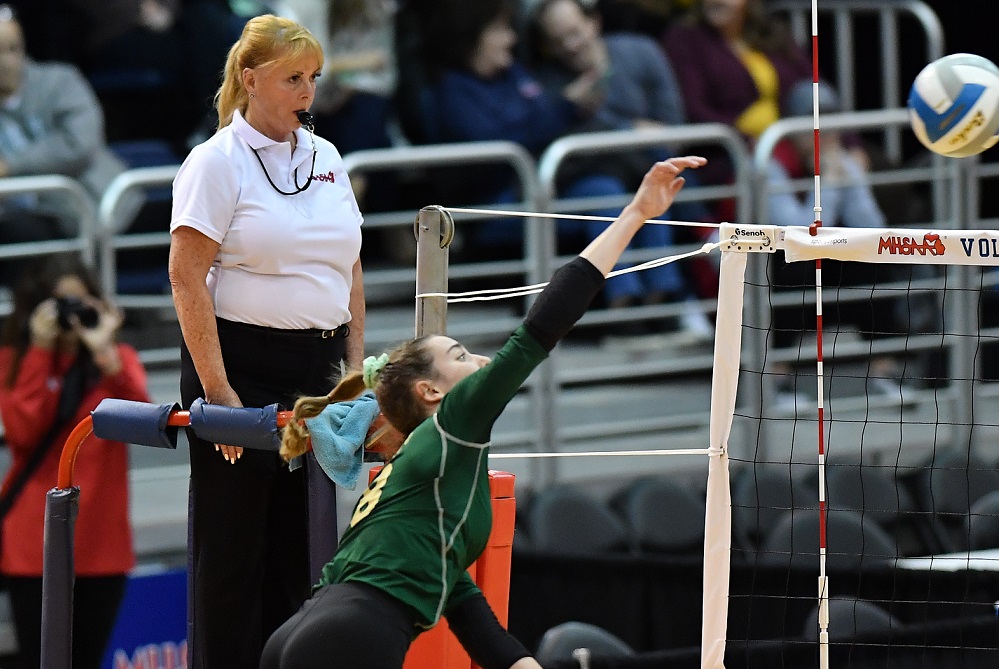
Be the Referee: Volleyball Obstruction
By
Brent Rice
MHSAA Assistant Director
September 23, 2021
Be The Referee is a series of short messages designed to help educate people on the rules of different sports, to help them better understand the art of officiating, and to recruit officials.
Below is this week's segment – Volleyball Obstruction - Listen
Ever wonder why in volleyball some balls hit into obstructions remain in play, while others are replayed, and some end the rally?
If a ball hits an obstruction over a playable area during a rally, and then is played by the same team, it has the same status as any other hit. However, that isn’t the case in all other instances.
If the ball hitting the wall or an object attached flush to the wall doesn’t actually interfere with a player’s legitimate effort to play the ball, the ball is dead and a loss of rally and point shall be awarded. If it does interfere with the playing of the ball, a replay is declared if the wall is less than six feet from the boundary.
If the ball hits a suspended backboard over the playable area, a replay will be declared as long as the referee believes the ball would have remained in play. Serves that hit any obstruction are a loss of rally and point.
Previous editions
Sept. 16: Catch or No Catch - Listen
Sept. 9: Intentional Grounding – Listen
Sept. 2: Pass Interference – Listen
Aug. 26: Protocols and Mechanics – Listen

Be the Referee: Toe the Line on PKs
October 15, 2020
This week, MHSAA officials coordinator Sam Davis explains a change in soccer affecting goalkeeper movement during penalty kicks.
Be The Referee is a series of short messages designed to help educate people on the rules of different sports, to help them better understand the art of officiating, and to recruit officials.
Below is this week's segment - Toe the Line on Penalty Kicks - Listen
Here’s a high school soccer rules change for the upcoming season. Rules for the placement and movement of the goalkeeper on a penalty kick have been rewritten to make it more clear what a keeper can or cannot do.
As in previous years, goalkeepers can move laterally along the goal line prior to the taking of the penalty kick. But new this year, goalkeepers need only have one foot on (or in-line) with the goal line at the time of the kick.
This allows keepers to lunge before the ball is kicked, as long as one foot stays on the line. Previously, the goalie needed to keep both feet on the goal line or in line.
Past editions
10/8: Disconcerting Acts - Listen
10/1: Ball Hits Soccer Referee - Listen
9/24: Clocking the Ball from the Shotgun - Listen

